Artificial Selection
If feeble man can do much by his powers of artificial selection, I can see no limit to the amount of change, to the beauty and infinite complexity of the coadaptations between all organic beings, one with another and with their physical conditions of life, which may be effected in the long course of time by nature's power of selection. (Charles Darwin, On the Origin of Species, ch. 4)
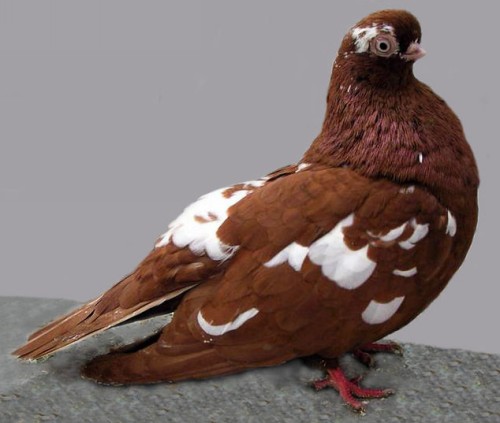 English Short-Faced Tumbler
English Short-Faced TumblerAll photos on this page are
by Jim Gifford
Artificial selection is a term coined by Charles Darwin to describe evolution in animals that has been produced by man. As an example, the variation in dogs has been especially great. Man has produced everything from chihuahuas to St. Bernards from a few species of wild dog.
The key is man's power of accumulative selection: nature gives successive variations; man adds them up in certain directions useful to him. (Darwin, Origin of Species, ch. 1)
But let's look at the domestic pigeon, commonly bred in Great Britain, because that is what Darwin himself chose to specialize in.
The Power of Artificial Selection
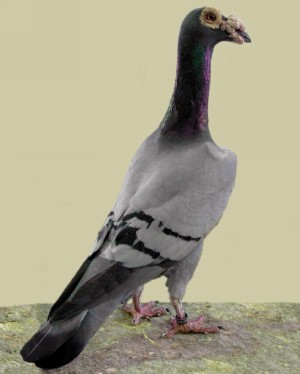 English Carrier Pigeon
English Carrier PigeonArtificial selection allows rapid changes in a species. This is because man has one power which nature does not. Man can ensure that an animal breeds with only those animals that will preserve a beneficial trait.
To understand that, in nature an individual may possess better eyesight or stronger muscles, but it will not necessarily mate with another individual of equal caliber. as a result, many beneficial traits are likely simply lost to the species. Not so with man. Man has the ability to prevent his domesticated animals from mating with animals that he has not chosen.
These rapid changes give us the ability to see how far evolution can go in just a few thousand years.
Charles Darwin lists the type of changes that breeding has produced in pigeons:
- Number of the caudal [tail] and sacral [pelvic area] vertebrae
- Number of ribs, along with the width and number of processes
- Divergence and size of the two arms of the furcula [wishbone]
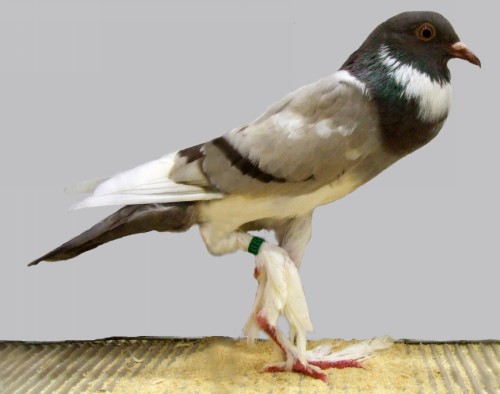 Pigmy Pouter Pigeon
Pigmy Pouter Pigeon- Shape and size of eggs
- Manner of flight, voice, and disposition "differs remarkably"
- In some breeds the male and female have begun to differ from one another
I don't know about you, but I find these to be remarkable differences. Even the number of vertebrae and ribs differ! Sexes have begun to diverge from one another!
That's remarkable!
It's so remarkable, that it had an effect on naturalists in general, whose job it was to classify animals. That effect had a lot to do with spurring Darwin's thinking on natural selection (or evolution] …
Natural Selection
I've mentioned before that Darwin developed his theory of evolution backwards from the way we normally suppose. We assume he worked from fossils forward, but he didn't. He developed his theory beginning with modern, living creatures and worked backwards.
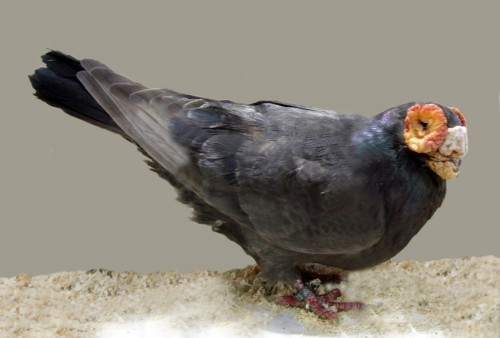 Black Barb Pigeon
Black Barb PigeonIt was the job of a naturalist in his day to classify organisms. If the naturalist felt that the organism and its relatives were unique enough to be an independent creation of God, then they were classified as a species. If they were so similar to a different type of organism that one seemed to have descended from the other, then they would be classified as a variety.
Darwin found it impossible to determine which was which.
And he noted that most other naturalists did, too, as evidenced by their rampant disagreement with one another on the subject.
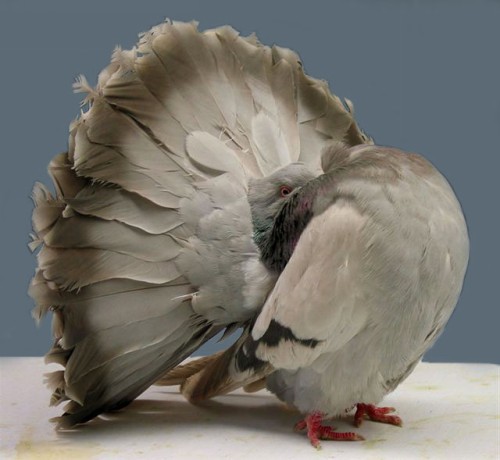 Silver Barred Fantail Pigeon
Silver Barred Fantail PigeonAll photos on this page are
by Jim Gifford
Artificial selection confirmed the reason for the problem:
Altogether at least a score of pigeons might be chosen, which if shown to an ornithologist … would certainly, I think, be ranked by him as well-defined species. Moreover, I do not believe that any ornithologist would place the English carrier, the short-faced tumbler, the runt, the barb, pouter, and fantail in the same genus. (ibid., ch. 1, pictures on this page are for your reference)
Genus is the next class above species. Not only would an ornithologist have placed these birds—known to be related by descent—in separate species, he would place them in separate genera [plural of genus].
If artificial selection can produce genus-level changes in a couple thousand years, then how much change could be produced by natural selection in hundreds of millions of years?
All you would need is evidence that nature could go from species to genus to family to order to class to phyla to kingdom in small steps …